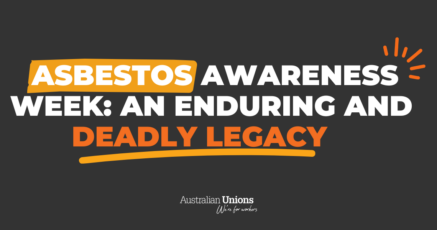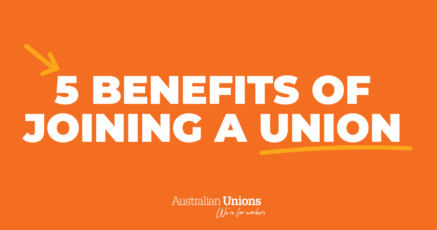Raise your hand if you’ve dragged yourself to work this year while unwell – there’s quite a few of you out there.
The findings from the Australian Council of Trade Union’s annual ‘Work Shouldn’t Hurt’ survey are sobering.
More than a third of workers in insecure jobs – including fixed-term and independent contractors, casuals and gig economy workers – report having gone to work while suffering from a work-related injury or illness in 2022.
No one is turning up by choice: there are many reasons why we feel the need to show up despite injury.
Go hungry or go to work?
Consistent with the 2021 survey, many workers are worried about how taking time off work because of injury could affect their job – such as having hours reduced or losing their job.
Around 40 per cent of those injured are turning up to work because it’s simply too difficult to arrange a cover or to catch-up on work later.
And there are two concerning upticks for 2022.
The first is that 38 per cent of workers are reporting that they literally couldn’t afford to be away from work – likely a sign of the unbearable cost-of-living pressures workers have suffered this year.
The second is a leap in workers who lacked paid leave. Permanent workers have had depleted leave throughout the pandemic and casuals have not had access to paid leave at all.
Union members fought hard to make sure paid pandemic leave was in place as long as it was, but that work is part of a much larger campaign to end the insecure work crisis in this country.
Low staffing stretches workers to their limits
The 40 percent of workers showing up to work injured because there wasn’t a cover for them is a symptom of a larger problem: staffing.
According to the survey, 46 per cent of respondents couldn’t do their work safely due to insufficient staffing levels in their workplace.
In frontline industries – such as health, education, and retail – more than 30 per cent said their employer did not prioritise worker safety above production, output or service.
There is no excuse for an employer to disregard any workers’ health and safety. Period.
Yes, there is good news
On the plus side, if you have a Health and Safety Representative (HSR) at your workplace, you are far more likely to be protected from these unsafe situations at work.
For example, 78 per cent of workers with an HSR at their workplace said their workplace complies with its own Health and Safety policies, compared to just 50 per cent of workers with no HSR present.
It is important to note that HSRs are different from other types of safety officers or first-aid officers you might find at work.
HSRs are there for the employees: they are elected or chosen by the workers. Compared to employee-nominated safety officers, they put your concerns first and foremost. HSRs have rights to be trained by their union every year and have powers to inspect records and investigate incidents.
Employers are legally required to consult them and workers about all matters relating to health and safety including any changes to the way that work is conducted.
Your best protection at work is union membership. If you don’t have an HSR at your work, the first step is for you and your workmates to join your union and elect an HSR. In many workplaces you can have multiple HSRs – there’s power in numbers.
Workers are people first. That’s why union members stand together for better workplace conditions and protected workers’ rights. Always.
Cover photo credit: engin akyurt on Unsplash








SHARE:
Turning up to work unwell? You need a Health and Safety Representative